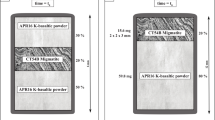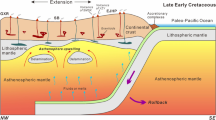Abstract.
The Abbott Unit (∼508 Ma) and the Vegetation Unit (∼475 Ma) of the Terra Nova Intrusive Complex (northern Victoria Land, Antarctica) represent the latest magmatic events related to the Early Paleozoic Ross Orogeny. They show different emplacement styles and depths, ranging from forcible at 0.4–0.5 GPa for the Abbott Unit to passive at ∼0.2 GPa for the Vegetation Unit. Both units consist of mafic, felsic and intermediate facies which collectively define continuous chemical trends. The most mafic rocks from both units show different enrichment in trace element and Sr-Nd isotopic signatures. Once the possible effects of upper crustal assimilation-fractional crystallisation (AFC) and lower crustal coupled AFC and magma refilling processes have been taken into account the following features are recognised: (1) the modelled primary Abbott Unit magma shows a slightly enriched incompatible element distribution, similar to common continental arc basalts and (2) the modelled primary Vegetation Unit magma displays highly enriched isotope ratios and incompatible element patterns. We interpreted these major changes in magmatic affinity and emplacement style as linked to a major change in the tectonic setting affecting melt generation, rise and emplacement of the magmas. The Abbott Unit mafic melts were derived from a mantle wedge above a subduction zone, with subcontinental lithospheric mantle marginally involved in the melting column. The Vegetation Unit mafic melts are regarded as products of a different source involving an old layer of subcontinental lithospheric mantle. The crustal evolution of both types of mafic melts is marked by significant compositional contrasts in Sr and Nd isotopes between mafic and associated felsic rocks. The crustal isotope signature showed an increase with felsic character. Geochemical variations for both units can be accounted for by a similar two-stage hybridisation process. In the first stage, the most mafic magma evolved mainly by fractional crystallisation coupled with assimilation of metasedimentary rocks having crustal time-integrated Sr and Nd compositions similar to those of locally exposed metamorphic basement. The second stage involves contaminated products mixing with independently generated crustal melts. Petrographic, geochemical and isotope data also provide evidence of significant compositional differences in the felsic end-members, pointing to the involvement of metaigneous and metasedimentary source rocks for the Abbott granite and Vegetation leucogranite, respectively.
Similar content being viewed by others
Author information
Authors and Affiliations
Additional information
Received: 31 March 1998 / Accepted: 3 May 1999
Rights and permissions
About this article
Cite this article
Di Vincenzo, G., Rocchi, S. Origin and interaction of mafic and felsic magmas in an evolving late orogenic setting: the Early Paleozoic Terra Nova Intrusive Complex, Antarctica. Contrib Mineral Petrol 137, 15–35 (1999). https://doi.org/10.1007/s004100050579
Issue Date:
DOI: https://doi.org/10.1007/s004100050579




